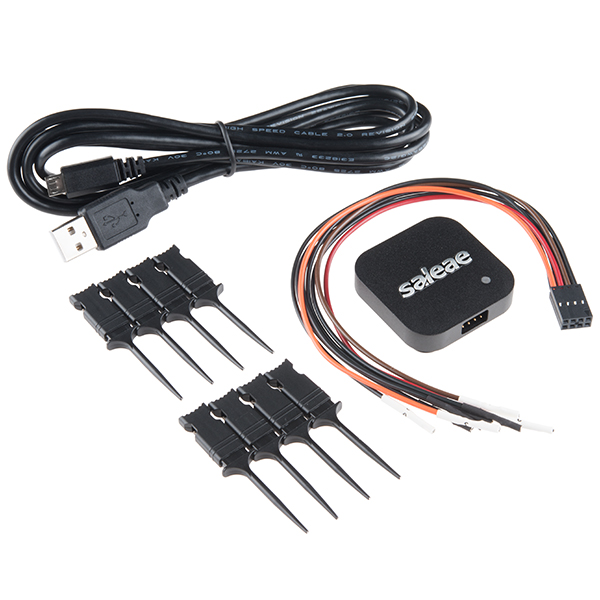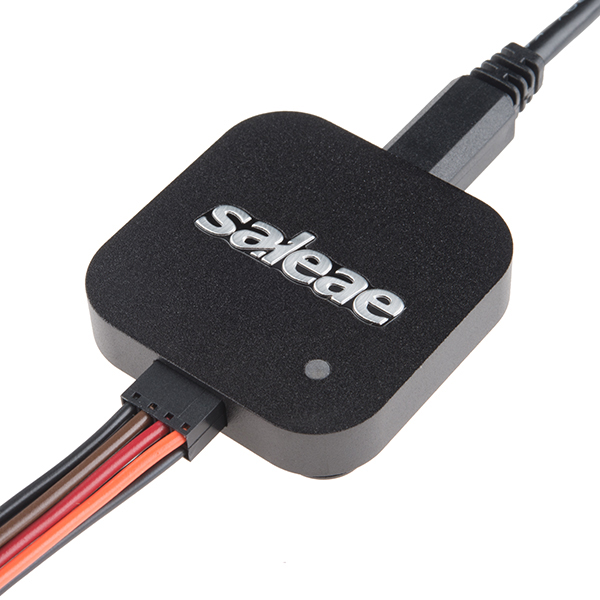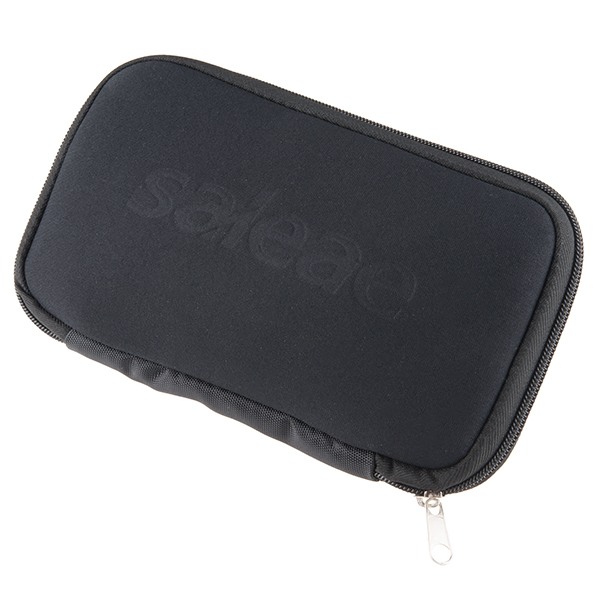Logic 4 - USB Logic Analyzer
This is the Logic 4, a powerful logic analyzer in a very small anodized aluminum package from Saleae Logic. We absolutely love the simplistic, sleek design with light-weight software and a high-quality finish. Who needs 50+ connections when you're troubleshooting I2C? With USB connectivity, you can analyze up to 4 digital waveforms (with one input able to analyze both analog and digital waveforms) and timing information on your I2C, SPI, serial, and digital IO lines with ease. This little analyzer is great for those reverse engineering projects as well. Works with signals 2.5V to 5V!
The Logic 4 includes everything you need in a compact carrying case. The test leads are disconnectable from the Logic unit, which makes it easy to remove the expensive portion of Logic from a board when you've got lots of hooks in place.
- 1x Logic 4
- 1x USB A to mini-B Cable
- 1x Ultra-Flexible Test Lead Set
- 8x Micro Hook Clips
- 1x Custom Carrying Case
- One Multi-Use Input - Analog/Digital/Both
- Three Digital-Only Inputs
- Digital Sample Rate: 12 MS/s (Max)
- Analog Sample Rate: 6 MS/s (Max)
- Fastest Digital Signal: 3 MHz
- Supported Logic Levels (Digital): 2.5V-5.5V
- Input Voltage Range (Analog): 0V-5V
- Bandwidth (Analog): 600 kHz
- Number of bits (Analog): 8 bits
- Works with RS-232, 422/3 Directly
- USB 2.0
- 1.66" x 1.66" x .39" ( 42 x 42 x 10 mm)
Logic 4 - USB Logic Analyzer Product Help and Resources
microSD Sniffer Hookup Guide
August 4, 2015
A basic introduction to working with the microSD Sniffer.
Core Skill: Electrical Prototyping
If it requires power, you need to know how much, what all the pins do, and how to hook it up. You may need to reference datasheets, schematics, and know the ins and outs of electronics.
Skill Level: Experienced - You will need to consult a datasheet for calculations to determine a components output format, linearity, and do a little math to get what you need. You will be using a datasheet or schematic beyond basic pinouts.
See all skill levels
Comments
Looking for answers to technical questions?
We welcome your comments and suggestions below. However, if you are looking for solutions to technical questions please see our Technical Assistance page.
Customer Reviews
4.8 out of 5
Based on 4 ratings:
1 of 1 found this helpful:
Tremendous Tool
This is the first logic analyzer I have ever used and I am not the least bit disappointed. My first tasks for this were to peek into my serial communications (USART and I2C) on my AVR project. The software is intuitive and I had incredible insight into my problems in no time at all. I recommend Saleae to anyone having a little trouble getting started on their serial implementations or curious about timing of particular events. Really, there are so many ways that this little tool can help a student visualize the process.
Very good buy!!!
Some more experienced EEs/Hobyists might say these are silly. But it's actually an incredibly good tool to have. I was able to quickly detect an issue with an I2C firmware library and make the needed changes and I'm a total rookie.
Love it
Essential tool





